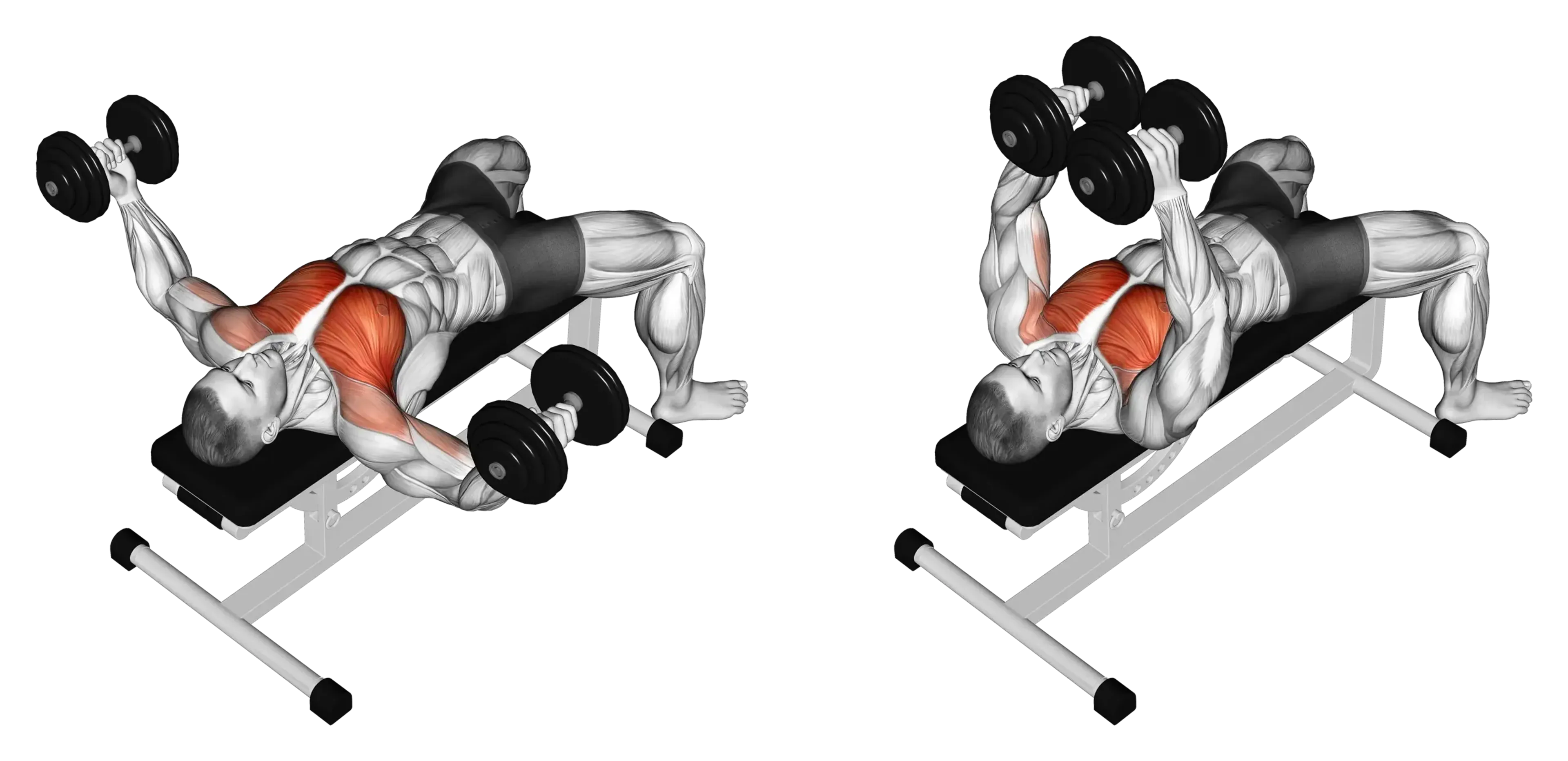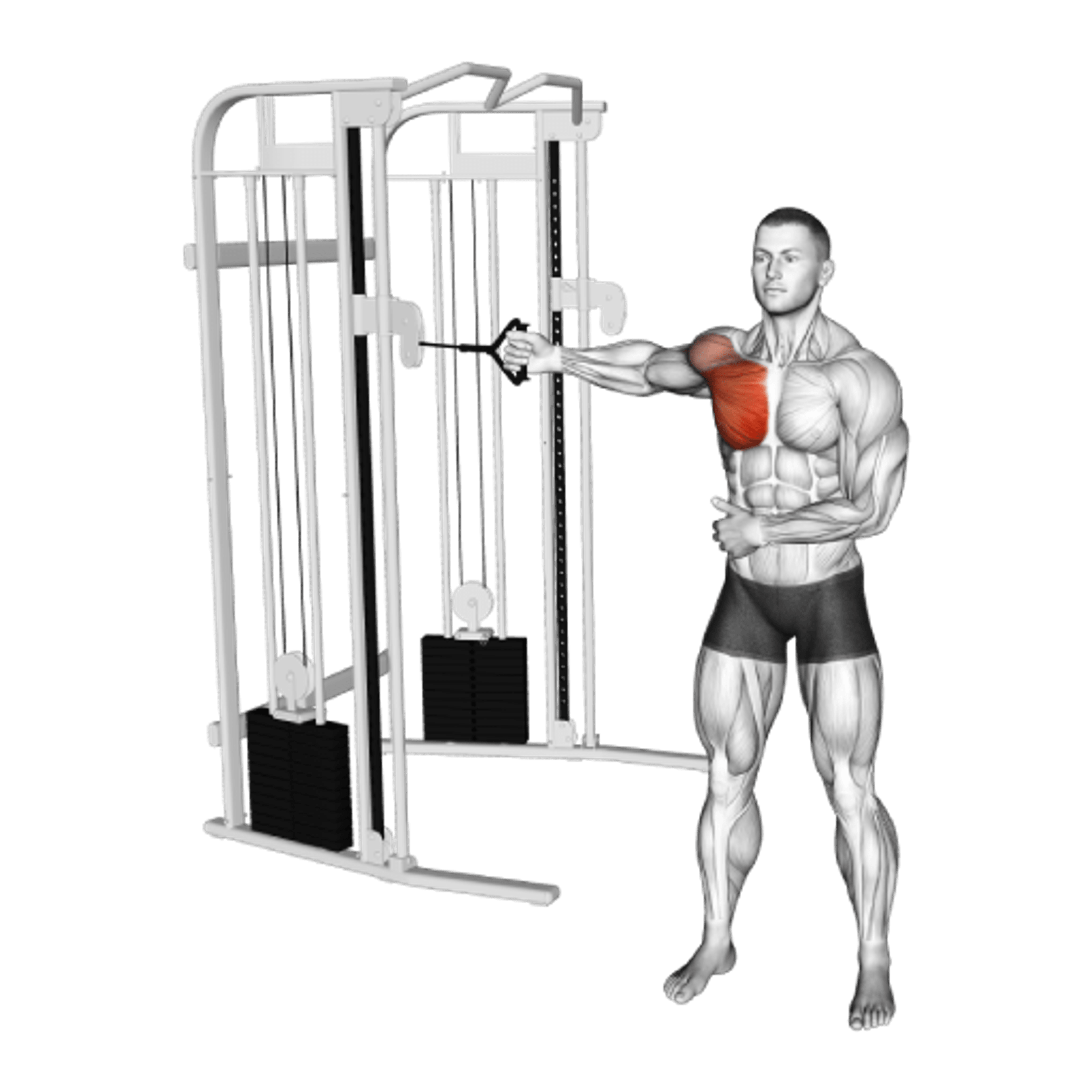Dumbbell Fly

Overview
- Primary Focus:
- Chest.
- Equipment:
- Dumbbell and bench.
- Difficulty:
- Intermediate.
General Information
Dumbbell Fly is an isolation exercise that primarily targets the chest (pectoralis major), while secondarily engaging the front shoulders (anterior deltoids) and biceps brachii. It is a beginner-level movement that helps develop chest width and improve muscle definition by focusing on the stretch and contraction of the chest muscles.
This exercise is typically performed on a flat bench but can also be done on incline or decline benches to shift emphasis to different parts of the chest. Unlike pressing movements, which involve elbow extension, the dumbbell fly emphasizes horizontal adduction — the inward movement of the arms — which isolates the chest muscles more directly.
The dumbbell fly is an effective addition to any chest workout, especially when the goal is muscle hypertrophy, balance between sides, or building a strong mind-muscle connection.
Muscles Worked
- Pectoralis Major
- Primary
- Deltoid
- High
- Serratus Anterior
- Medium
- Biceps Brachii
- Low
Instructions
- Lie on a flat bench with a dumbbell in each hand, palms facing inward (neutral grip).
- Extend your arms directly above your chest with a slight bend in the elbows.
- Slowly lower the dumbbells in a wide arc until your elbows are in line with your chest or slightly below.
- Keep your elbows softly bent and avoid letting them drop too low or flare out.
- Squeeze your chest muscles and bring the dumbbells back together over your chest in the same arc motion.
- Pause at the top and repeat for the desired number of reps.
Common Mistakes
Injuries
Dumbbell Fly is a low to medium risk exercise when performed with proper form and appropriate weight.
Shoulder injuries can occur if the arms are lowered too far or too quickly, placing excessive stress on the shoulder joints. Always maintain a slight bend in your elbows and limit the range of motion to what feels safe and controlled.
Wrist strain is another possibility, especially if grip position shifts or the wrists aren't kept in a neutral alignment. Using a light to moderate weight and focusing on controlled motion helps mitigate risk.
If you have a preexisting shoulder issue or experience discomfort during flies, consider switching to cable machines or limiting the stretch at the bottom of the movement.
Alternative Exercises

Frequently Asked Questions
- Q: Can I do dumbbell flys on the floor instead of a bench?
Yes, the floor version limits range of motion and is safer for shoulders, especially for beginners.
- Q: Should I use heavy or light weights for dumbbell flys?
Use lighter weights to maintain control and emphasize muscle contraction.
- Q: What’s the difference between a dumbbell fly and a dumbbell press?
The fly isolates the chest with a sweeping arc motion, while the dumbbell press also engages triceps and shoulders through a pressing movement.
Overview
- Primary Focus:
- Chest.
- Equipment:
- Dumbbell and bench.
- Difficulty:
- Intermediate.




